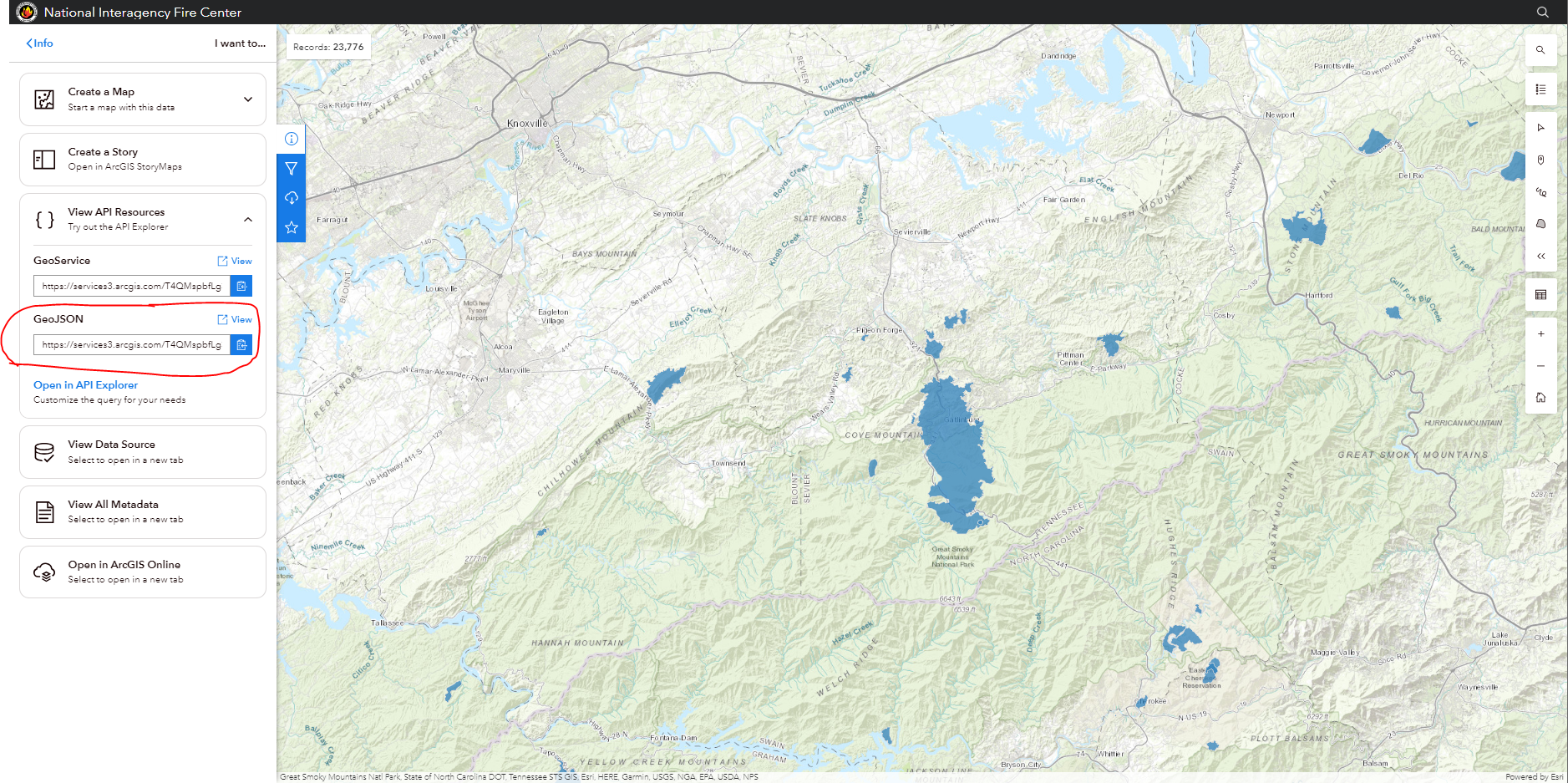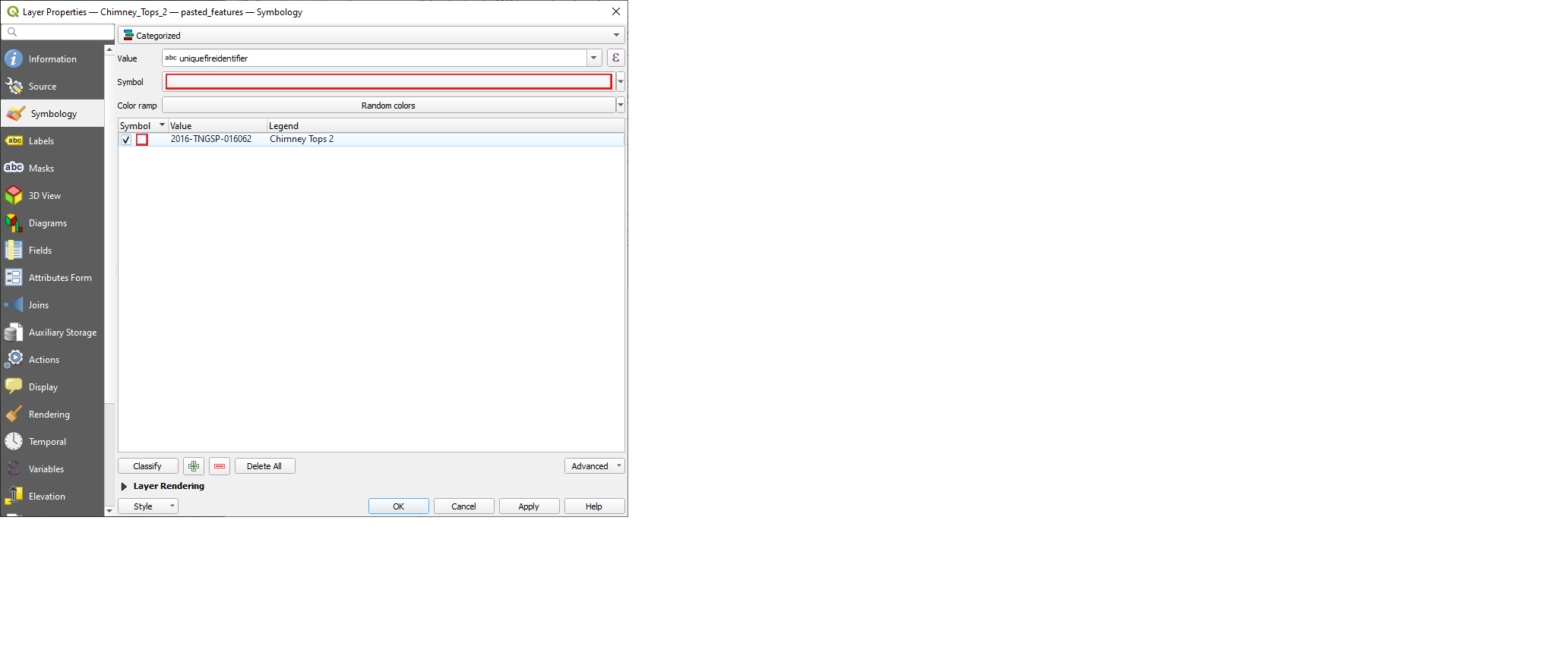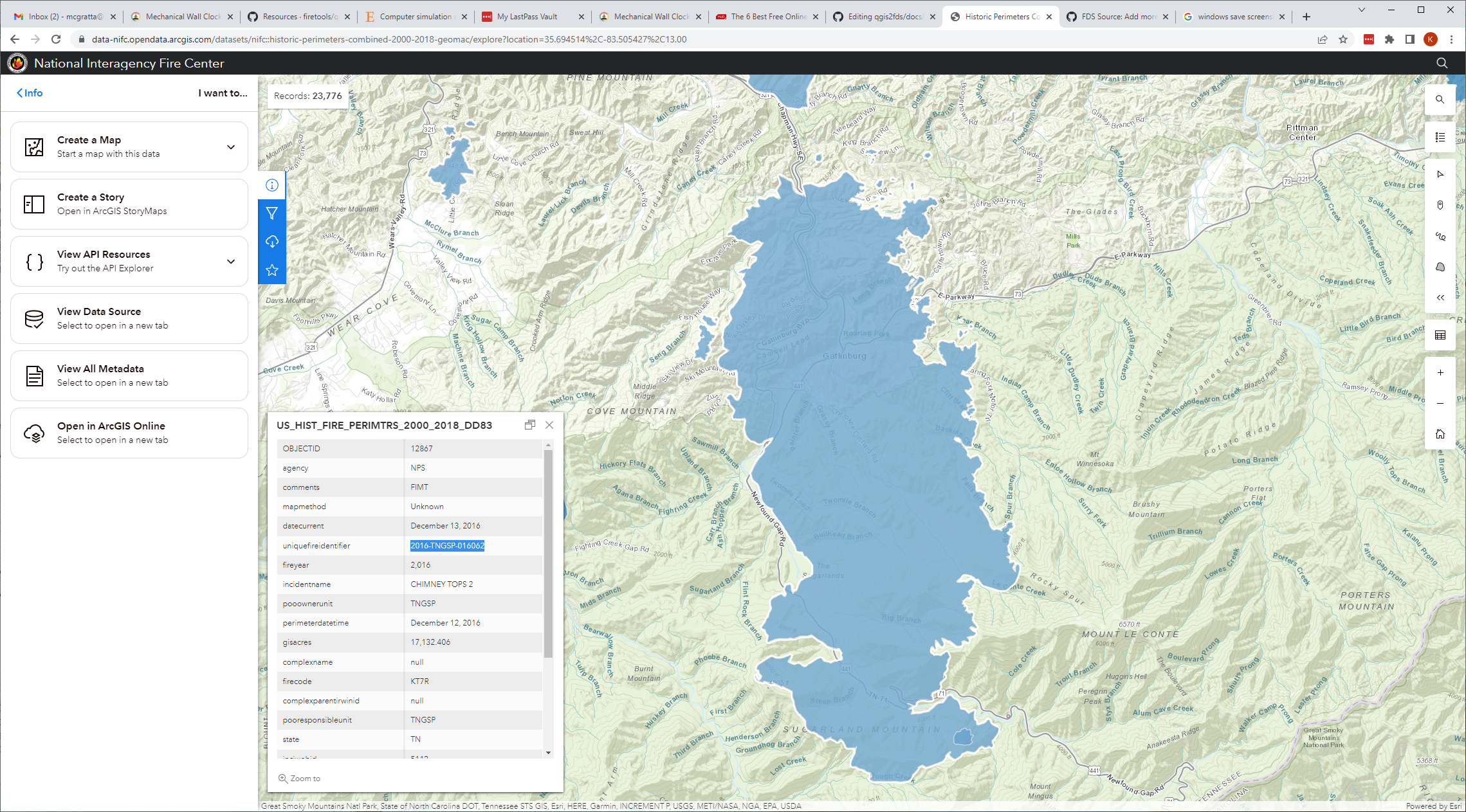-
Notifications
You must be signed in to change notification settings - Fork 11
Import US NIFC burn scars
This wiki page describes how to import US NIFC burn scars to a QGIS layer.
NIFC (National Interagency Fire Center), located in Boise, Idaho, is the US support center for wildland firefighting. Eight different agencies and organizations are part of NIFC. Decisions are made using the interagency cooperation concept because NIFC has no single director or manager.
-
Browse the US NIFC geographic data repository
-
Click on
Historical Wildland Fires -
Choose a specific set of data. For this tutorial, we will be using "Historic Perimeters Combined 2000-2018 GeoMAC"

Zoom in on the area you are interested in. For this tutorial, we are interested in the Chimney Tops 2 fire that occurred near Gatlinburg, Tennessee, in 2016. You should see something like this:

where each shaded region represents the extent of a fire that occurred sometime between 2000 and 2018.
-
Once you have found your specific fire perimeter, click the blue link labeled
I want to use thisat the bottom left, as shown in the picture above. -
Click on
View API Resourcesand copy theGeoJSONlink.

-
In your QGIS session, right click on
ArcGIS REST Serversand click onNew Connection... -
Name it "Fire Database" or something similar and paste the URL copied from the NIFC website with everything past ".../FeatureServer" removed.

- Now drag the layer (US_HIST_FIRE_PERIMTRS_2000_2018_DD83) under the Fire Database connection created in the previous step into the map layers directly beneath the browser.

- Right-click on the layer entry and select "Properties..." at the bottom. Select "Symbology" on the left. At the top, choose "Catagorized" and just below that, "uniquefireidentifier". Click the green + sign near the bottom and add under "Value" the "uniquefireidentifier" which you obtain from the "Historic Perimeters Combined 2000-2018 GeoMAC" database. These parameters are found by clicking on the fire perimeter of interest.


Back to qgis2fds Wiki Home